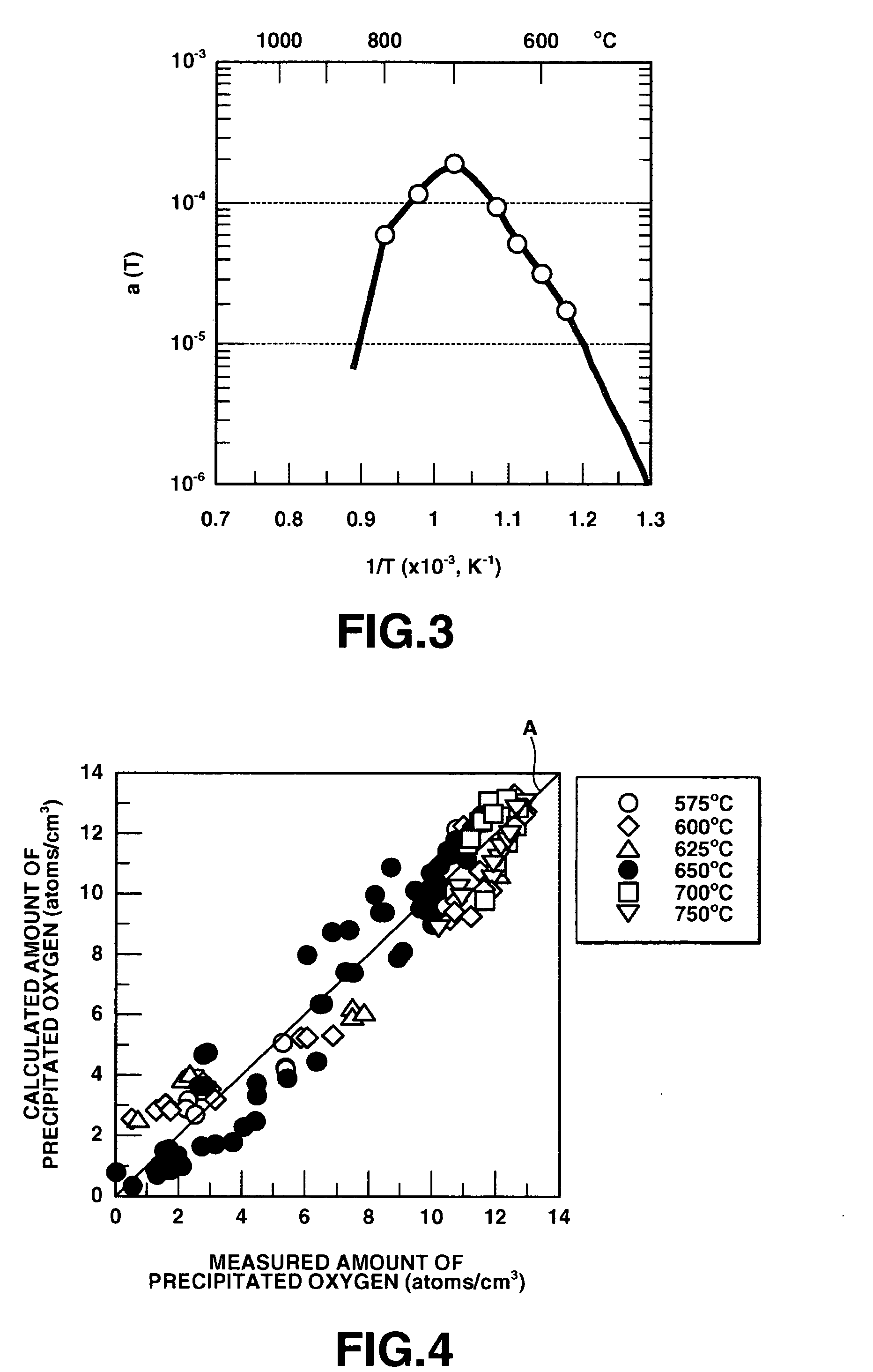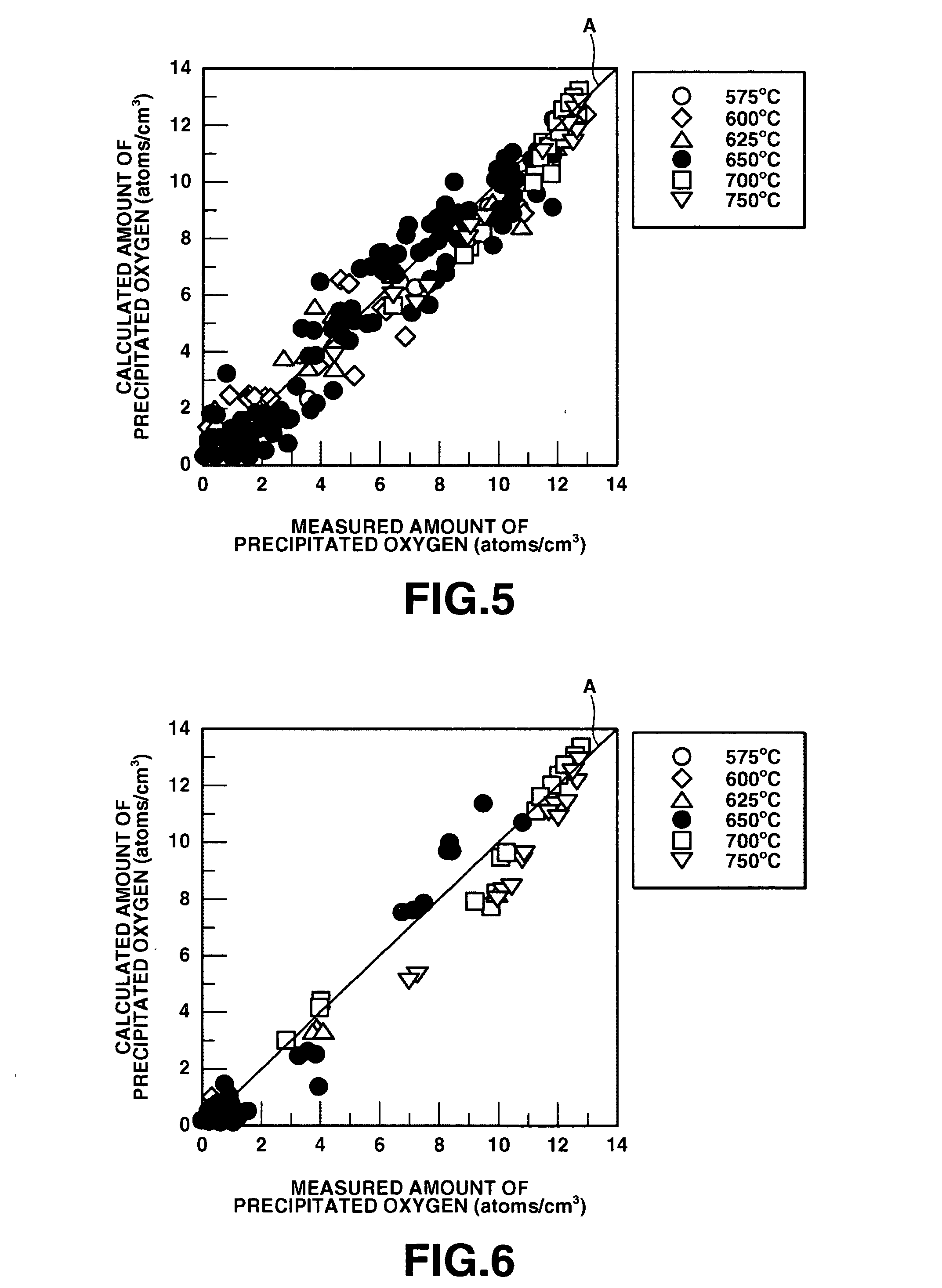Method for predicting precipitation behavior of oxygen in silicon single crystal, method for determining production parameter of silicon single crystal, and storage medium for storing program for predicting precipitation behavior of oxygen in silicon single crystal
a technology of silicon single crystal and precipitation behavior, which is applied in the field of method method for determining production parameter of silicon single crystal, and storage medium for storing program for predicting precipitation behavior of oxygen in silicon single crystal. it can solve the problem of not considering the thermal donor effect on oxygen precipitation, no model available for theoretically, and inability to express the effect of thermal donor on oxygen precipitation. the effect of improving the reliability of the calculation resul
- Summary
- Abstract
- Description
- Claims
- Application Information
AI Technical Summary
Benefits of technology
Problems solved by technology
Method used
Image
Examples
example 1
[0073]As Example 1, verification was made of the prediction of precipitation behavior of oxygen in accordance with the invention with respect to a typical heat treatment process. In the heat treatment conducted, wafers were charged into a furnace at a set temperature and were held.
[0074]The silicon single crystal used was a P-type crystal with a diameter of 150 mm whose oxygen concentration was 11×1017 to 17×1017 atoms / cm3 (old ASTM designation), and whose thermal donor concentration in the as-grown state was 1×1014 to 2×1015 cm−3. Hereafter, of the heat treatment processes, the process below 800° C. in which nucleation occurs actively will be referred to as the nucleation heat treatment, and the process above 800° C. in which the growth of nuclei mainly occurs will be referred to as the growth heat treatment. Under the various conditions shown below, the present inventors carried out the nucleation heat treatment, followed by the growth heat treatment, and measured the density of o...
example 2
[0090]As Example 2, verification was made of the prediction of precipitation behavior of oxygen in accordance with the invention with respect to a heat treatment process different from Example 1, and the versatility of the present invention was confirmed. In the heat treatment conducted, wafers were charged into a low-temperature furnace, and were slowly heated to a set temperature.
[0091]The silicon single crystal used was a P-type crystal with a diameter of 200 mm whose oxygen concentration was 11.2×1017 to 13.5×1017 atoms / cm3 (old ASTM designation). In the heat treatment conducted in this example, the wafers were charged into a 500° C. furnace, and the temperature was raised at a rate of 1° C. / min. after the charging. Then, as the end-point temperature, four temperatures of 650, 700, 750, and 800° C. were set, and after the in-furnace temperature reached the set temperature, the respective temperatures were maintained for 4 hours. After the wafers were subjected to such nucleation...
PUM
| Property | Measurement | Unit |
|---|---|---|
| temperature | aaaaa | aaaaa |
| temperature | aaaaa | aaaaa |
| temperature | aaaaa | aaaaa |
Abstract
Description
Claims
Application Information
 Login to View More
Login to View More - R&D
- Intellectual Property
- Life Sciences
- Materials
- Tech Scout
- Unparalleled Data Quality
- Higher Quality Content
- 60% Fewer Hallucinations
Browse by: Latest US Patents, China's latest patents, Technical Efficacy Thesaurus, Application Domain, Technology Topic, Popular Technical Reports.
© 2025 PatSnap. All rights reserved.Legal|Privacy policy|Modern Slavery Act Transparency Statement|Sitemap|About US| Contact US: help@patsnap.com



